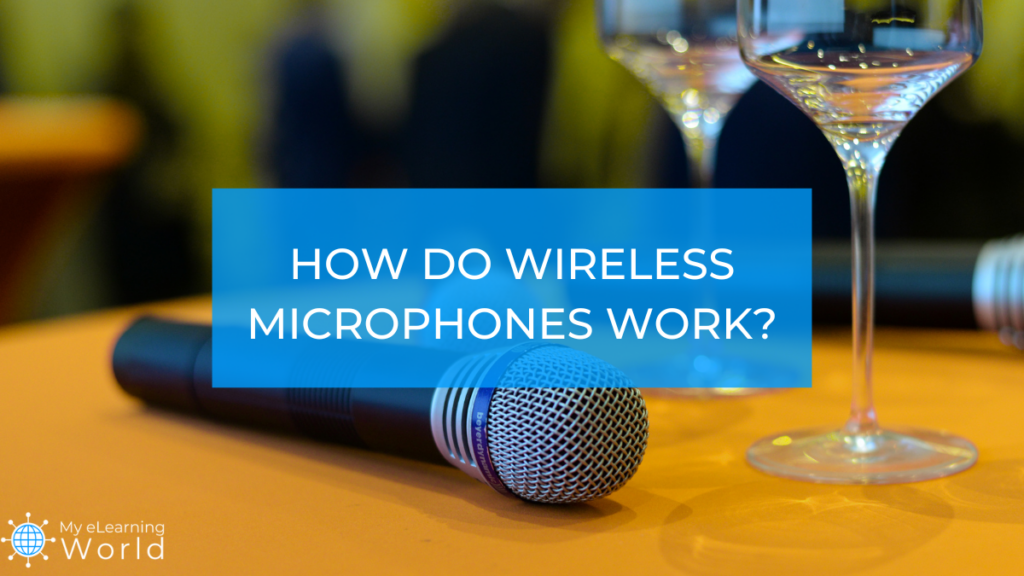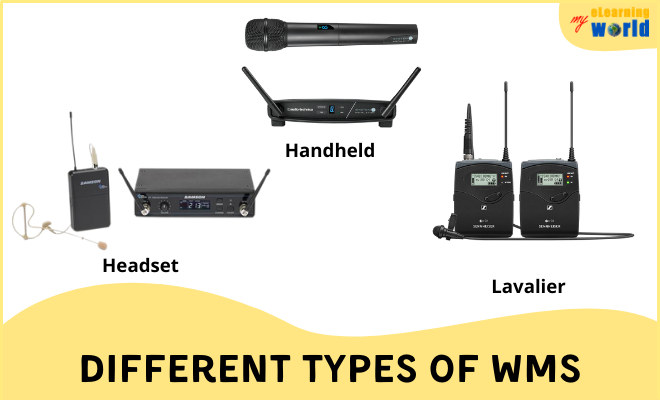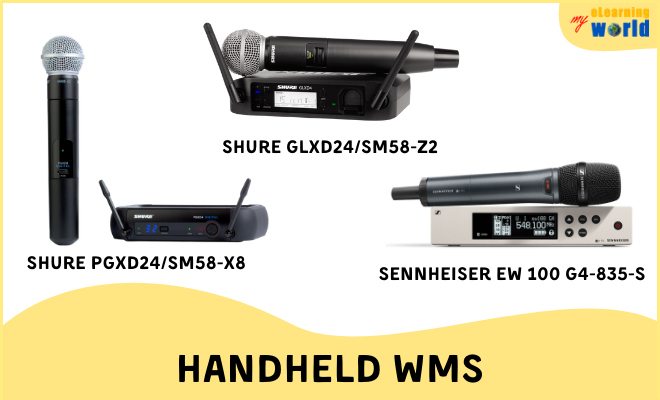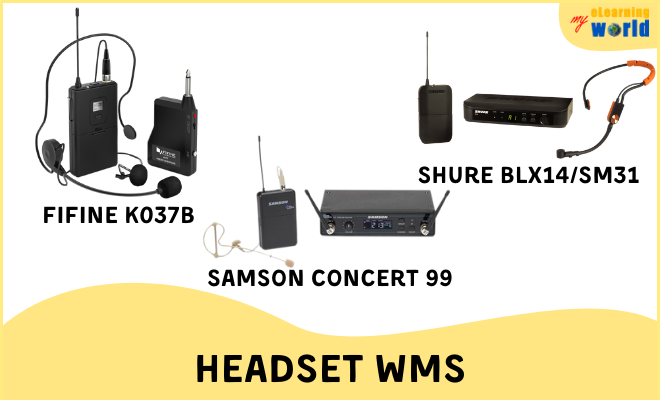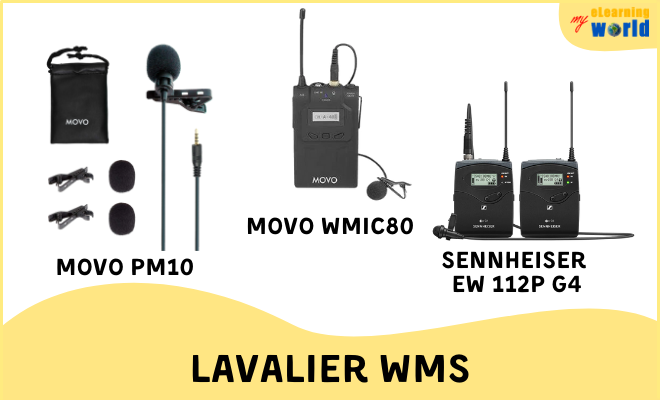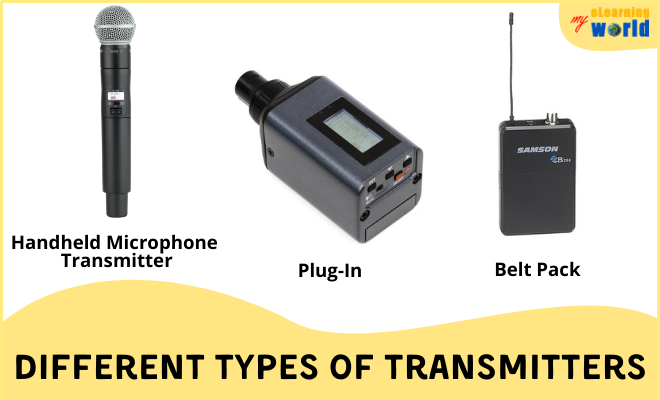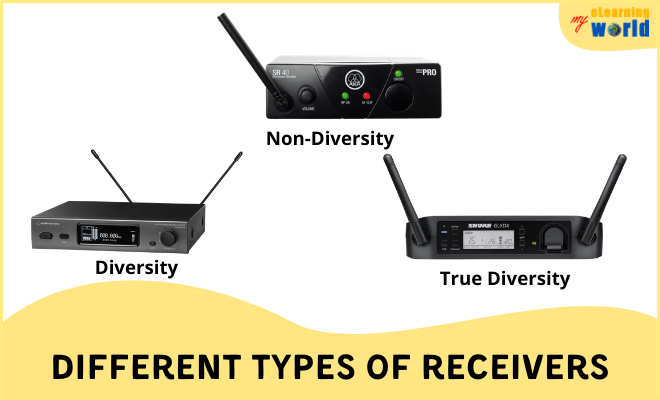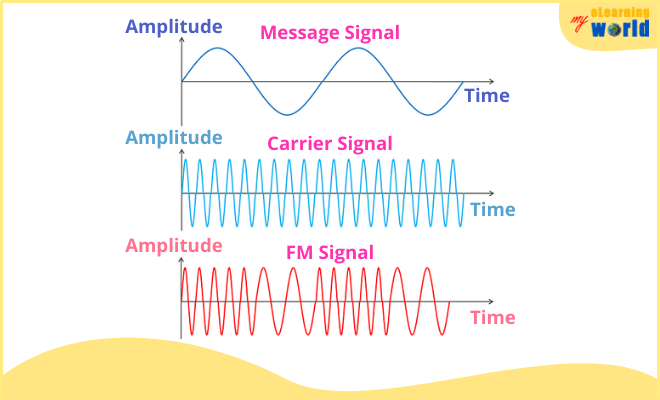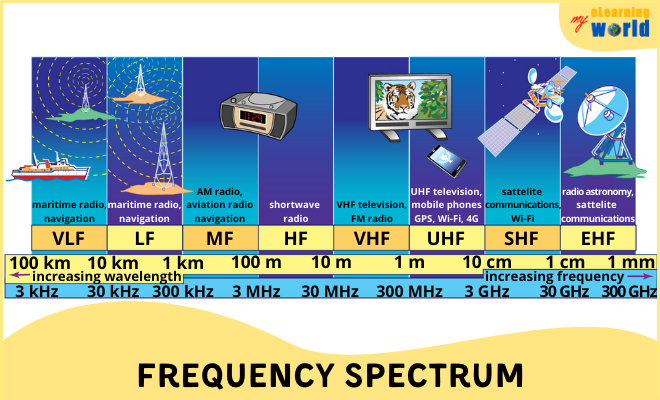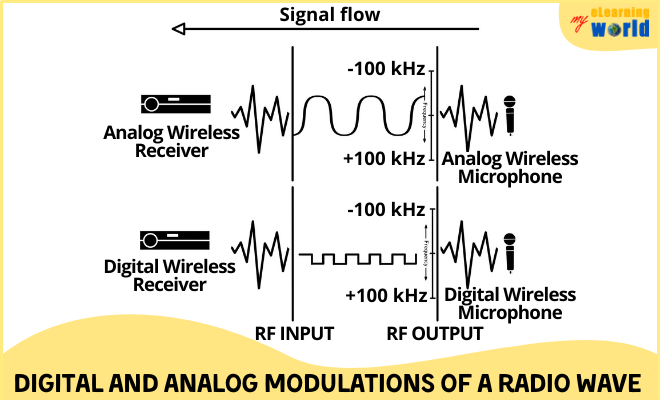If you’ve ever asked yourself “How do wireless microphones work?”, this guide is for you. Think of this as the ultimate guide to wireless mics with all the details about how they work, common uses, what to look for when choosing one, and more.
Not so long ago, performers had to deal with an unruly tangle of microphone cables. The cables were unsightly, and they invited all types of mishaps, such as trips, falls, and jacks popping out of amps mid-performance.
The mic cable also tethered musicians, as well as other types of entertainers and presenters, to one spot.
Wireless microphones (also called cordless) have exploded in popularity as a convenient and effective method of transmitting singing and speech.
Wireless mics are now a cornerstone of audio capture in numerous scenarios, offering unparalleled flexibility and mobility. They are prominently featured in live performances, allowing musicians and performers to move freely while delivering clear vocals. In public speaking engagements, corporate settings, and conferences, these microphones empower presenters to engage with audiences confidently.
In the world of entertainment, film, and television production, wireless microphones ensure synchronized audio capture, enabling actors to move naturally on set while maintaining audio quality. Sports commentators also rely on them to provide live commentary during games. In educational settings, wireless mics aid teachers in delivering clear lessons, particularly in larger classrooms or for students with hearing impairments.
Their adaptability and ongoing technological advancements continue to make wireless mic systems an essential tool for high-quality audio communication across diverse industries.
Of course, you might assume wireless mics are expensive, but the good news is you don’t need to worry about their price. The market has all different types of wireless mics fitting all budgets. Affordable wireless mic systems come in handy for home and office use, voiceovers, presentations, lectures, and classes that don’t require perfect sound or noise reduction.
Cordless mics can also be an effective choice for these purposes, as well as larger-scale productions such as concerts.
So how does a wireless microphone work? Read on to find out.
How Does a Cordless Mic Work?
Before we answer the question of “How do wireless microphones work?,” let’s figure out how wired microphones differ from cordless ones, what a wireless microphone system (WMS) consists of, what frequency they work at, as well as their pros and cons, where they are used, and what to look for when buying them.
What’s the Difference Between Cable and Wireless Microphones?
Put simply, a wired microphone transforms a sound into an electrical signal. From there, the signal is carried via a cable to a mixer or sound system, where it emerges as audio.
A cordless microphone, on the other hand, contains a battery-operated transmitter that sends audio signals through the air via radio waves.
What Are the Components of a Wireless System?
The components of a wireless system are unlike those of a corded microphone and perform differently.
1. The Microphone
There are three types of cordless mics:
a) Handheld Wireless Microphone with Built-In Transmitter
Many lead vocalists prefer this type of device. It’s a streamlined system because the wireless transmitter is built into the mic’s handle (also called the capsule), and its only other element is a wireless receiver. Some refer to it as a two-in-one.
Cable devices are usually available in cordless models if a user basically likes them but wants a cordless version. Singers or other users have more mobility with this type of mic.
b) Wireless Headset Mic with Body Pack Receiver
If you’re a dynamic performer such as Britney Spears or Cher, you’ll need to move with as little encumbrance as possible. It’s important to use a WMS that allows you to be active, sing, and not trip over a labyrinth of wires without sacrificing sound quality.
A headset mic, comprised of a microphone that’s worn on the head, a body pack transmitter and a cordless receiver works well for those who need a lightweight option that permits freedom of movement.
c) Lavalier Microphone
Lavalier (or lapel) mics are small, discreet microphones that are fastened to ties, collars and other clothing. It links to a body pack transmitter, which then sends the signal to a wireless receiver.
You may have seen broadcasters, public speakers and interviewers use this type of mic.
No matter what type you use, though, it needs to be paired with a transmitter.
2. The Transmitter
A transmitter is a device that literally transmits the microphone’s audio signals to a receiver.
There are three types of transmitters.
a) Handheld Microphone Transmitter
A handheld transmitter is built into the mic’s body. This makes the microphone somewhat larger than a traditional corded one The transmitter’s job is to convert audio signals to radio signals.
These wireless signals are broadcast from an antenna at the microphone’s base. A handheld transmitter is battery operated.
b) Plug-In
Plug-in transmitters, or plug-on, are standalone devices that can transform most non-cordless microphones into wireless. It attaches to the lower part of the model that’s usually connected to a cable.
c) Belt Pack
If a microphone is hands-free, such as a headset or lavalier, it uses a transmitter called a belt pack or body pack. A body pack is a boxy device with an antenna, and it’s about the size of a deck of cards or a pack of cigarettes.
A belt pack contains the components that relay a signal to a remote receiver. It clips onto a belt or waistband, or it can be tucked into a pocket.
The third most important piece of equipment that transforms audio signals to sound is the receiver.
3. The Receiver
The transmitter sends its signal to the receiver, a piece of equipment that transforms radio waves into audio signals. These audio signals then pass through the sound system. A typical receiver has two antennas so that it can effectively capture a strong signal from the transmitter.
The transmitter and the receiver need to be set to the same radio frequency so that the mic signal is sent correctly.
There are three types of receivers, and each has a different method of receiving the transmitted signal.
a) Non-Diversity
Non-diversity receivers only have one antenna to capture the transmitter’s signals. This type of receiver is notorious for issues such as random interference, fades and dropouts (total loss of audio).
Few manufacturers carry non-diversity receivers because of their unreliability and subpar function.
b) Diversity
Diversity receivers have two antennas. Each antenna connects to the same receiver. If the signal weakens on one antenna, the receiver shifts to the other.
Diversity receivers have spotty performance. Since they function indiscriminately, sometimes they strengthen a weak signal, but they’re also known to diminish a strong one.
c) True Diversity
True diversity receivers have two individual antennas spaced about two inches apart. Ideally, they should each be attached at a 45-degree angle. Each one is connected to its own receiver.
The receiver “intelligently” assesses the signal from each antenna and chooses the strongest one. Dropouts are much less likely with a true diversity receiver, and they’re the choice of most professionals.
Now that you know what each part of a WMS is, here’s how you can set one up.
The video demonstrates the process of setting up a basic wireless system with one receiver and one handheld or body pack transmitter.
The right frequency is essential for providing a clear channel to carry the mic’s sound.
What is Wireless Microphone Frequency?
Audio frequency is the gauge of how high or low the pitch of an audio signal is. Frequency is measured in Hertz (Hz). The frequency spectrum audible to the human ear is 20 Hz to 20,000 Hz.
A cordless mic transmits and also receives audio on a radio frequency, or operating frequency. These operating frequencies are divided into ranges, also called bands:
a) FM (Frequency Modulation)
This is the most popular frequency for cordless devices. Frequency modulation is a means of sending a signal on a radio frequency wave.
Many cordless microphones utilize frequency modulation. When they do, it requires access to approximately 200 kHz bandwidth. Bandwidth refers to the spectrum of frequencies that an electronic signal encompasses.
The radio frequencies, or RF, needed to access this bandwidth are:
VHF (Very High Frequency) – 30 to 300 MHz
UHF (Ultra High Frequency) – 300 MHz to 3 GHz
VHF
Mics utilizing VHF radio frequencies have a simple setup, because they only operate on one frequency. However, they’re susceptible to disruption because other wireless devices share the same frequency.
UHF TV Range
One of the advantages of using the UHF band (also known as the television band) is that the device can be adjusted to numerous frequencies. Not only does this help prevent interference from other crodless devices in the vicinity (also known as “getting stepped on”), but it permits the use of several radio mics at the same time.
The UHF range encompasses unassigned TV channels (also called white spaces). Some of the channels are reserved for actual television stations or public safety channels (police, fire department, etc.).
Use of UHF channels depends upon how many white spaces are available in each town. The microphone’s manufacturer can help you identify the best frequency range for your location.
- 900 MHz Range
This range spans 902 to 928 MHz. These are channels beyond the conventional TV spectrum. They’re well-suited to digital wireless mics.
- 2.4 GHz Range
This band can be used license-free worldwide. However, it may be susceptible to interference from WiFi equipment, and it only offers a few radio channels.
- 614 MHz to 698 MHz Range
This range has been reclaimed by the FCC and auctioned off to cellular providers, including T-Mobile, for wireless broadband use. As of July 13, 2020, it is now a Federal offense to use this space for cordless microphones, and it could result in fines or even criminal action.
Even if you try to use this band, your device will experience continuous interference, or it will simply stop working. That means you’ll have to shell out cash for an entire system that’s not in the 614 MHz to 698 MHz range.
b) Fixed-Frequency
These devices have a preset frequency that cannot be modified or changed. Because of this, they can only be used in one fixed area.
c) Frequency-Agile
A frequency-agile system automatically seeks the best frequency. These systems are more sophisticated and automatically display these frequencies directly on their screen.
Basic systems indicate the presence of interferences with an LED light. In this case, you’ll need to continue searching for and eliminating occupied frequencies until you find one that’s acceptable.
In the United States, licenses are required to use wireless mics on unassigned television channels, since they are part of the Broadcast Auxiliary Service (BAS). The Broadcast Auxiliary Service is a radio frequency system encompassing channels that are not used by the general public, but rather a path that an audio signal utilizes.
The FCC, however, usually ignores and doesn’t enforce this cordless mic licensing requirement.
Check out the video below and learn how to put together a basic wireless microphone setup and how to keep the components from interfering with each other.
There are pros and cons to using a cordless device. Knowing them can help you decide if a cordless mic is or isn’t right for you.
Advantages and Disadvantages of Wireless Microphones
Like any piece of equipment, cordless mics have advantages and disadvantages.
Advantages
- It allows complete freedom of movement.
- Can be hands-free.
- They eliminate cluttered-looking cables.
- Eliminate tripping hazards.
- They have a clean, aesthetically pleasing appearance.
- Lavalier mics have a good signal-to-noise ratio.
- There are several versions to choose from to suit your needs.
Disadvantages
- They have a short range of about 300 feet.
- Wireless mics with built-in batteries are not operational while they’re charging.
- Dead spots. These are places where the device won’t work and signal quality suffers.
- They’re susceptible to interference from other cordless devices which can affect audio quality.
- You’re using a public radio frequency, so the FCC could always reallocate it. This would force you to buy a new batch of microphones that can access another frequency spectrum.
- You’re limited to buying the mic, transmitter and receiver in the same package, from the same manufacturer. If you mix brands or components from different systems, they’ll create interference. A receiver using one frequency won’t work with a transmitter using another, and the reverse. This is especially problematic when frequencies aren’t adjustable.
Cordless microphones are extremely adaptable to numerous scenarios and have virtually unlimited uses.
What Are They Used For?
Wireless microphones are versatile devices that can be used by numerous individuals and in many settings where vocal amplification is needed.
- Lead vocalists
- Background vocalists
- Teachers and professors
- Fitness instructors
- Interviewers and interviewees
- Public speakers
- DJs
- Broadcasters
- Worship leaders
- Auctioneers
- Business meetings
- Karaoke
- Plays
- Television
- Video production
- Filmmaking
- Courtroom
Choosing a Wireless Microphone
Let’s consider the characteristics of a cordless mic that you should pay attention to when choosing it.
1. Microphone Type
There are two types of wireless devices: analog and digital.
a) Analog
Analog mics use cables and transform sound waves into electrical signals.
b) Digital
Digital one encodes sound waves into radio signals. These signals are then sent to a receiver. The receiver transmits the signal into a sound system, where it emerges as speech or singing.
Contrary to their name, digital devices aren’t totally digital. Like an analog system, they use an analog signal. However, digital systems send binary code via the signal, rather than straight analog sound.
It’s much easier to filter out intrusive noise with a digital microphone. That’s because they’re simply encoding and decoding audio information. Since the receiver only recognizes digital data, it completely disregards anything else on the transmission medium.
Some digital mics offer encryption, which is a means of jumbling data so it can’t be understood by hackers or others trying to intercept sensitive information. This is helpful during things such as business presentations, for example, where a company needs a high degree of confidentiality.
This video gives a super-simple explanation about what each wireless mic component does and how they all work together.
2. Range
Range is the distance that a microphone transmits sound. Some mics have short ranges, while others have ranges of 1,000 feet. Determine how far you’ll be from your audience or subject and multiply that by two. It’s better to be on the safe side and overestimate the range you’ll need.
The price of a system often equates with its range.
3. Size
Size of the cordless microphone depends upon its intended use and your personal preference.
- If you like the solid feel of an object, the size of a handheld mic would probably be the way to go. It’s also great if you don’t need to use your hands much, and it’s a nice size if you want that “classic” look.
- If you prefer to use an inconspicuous mic that leaves your hands free, then a tiny lavalier one would work well.
- The size of a wireless headset device falls between the larger handheld microphone and the tiny lavalier. It’s ideal if you need hands-free use, and if you need to feel something more substantial on your body.
- There are also very compact systems in which the mic is built into the transmitter. Its battery can last up to seven hours and the transmitter and receiver synch in a brisk three seconds. This microphone’s range is only about 70 feet, though, so it’s best for close-up scenarios such as interviews.
4. Battery Life
Some wireless microphones use two single-use, disposable AA batteries. It’s best to purchase alkaline batteries because of their high quality, longevity, and dependability.
Some have a rechargeable, nine-volt battery built into the unit. Rechargeable batteries are the more convenient and inexpensive option.
You won’t be out of as much cash as you would be from constantly replacing batteries, and you won’t be scrambling onstage or elsewhere to put batteries in or to remember to put them in, in the first place.
Some rechargeable batteries last approximately five hours, and one manufacturer claims that theirs lasts a whopping 30 hours.
5. Latency
Latency is a measure of the time it takes for a signal (from the microphone) to turn into a sound (the speech or singing that you hear). High latency occurs when someone sings or speaks, and there is a conspicuous delay. High latency can also be distracting for the presenter.
Wireless systems must transform analog signals into digital signals and then back to analog. They also need to find a channel with the strongest signal to maintain good sound quality.
Although this happens in a blink, this can add up to a latency that can be problematic in cheaper cordless models. Your best bet is to pay more money for a reliable, high quality mic.
Useful Resources
- How to Choose the Best Wireless Microphone
- Can a Wireless Mic Work with Any Receiver?
- Wireless Microphone Setup Guide
- How To Connect A Wireless Microphone To A Computer
- What is a dynamic microphone?
- How to clean a microphone
A Final Word on Wireless Mic Systems
Cordless microphones and wireless systems are great for performers and presenters who want freedom of movement minus a hazardous tangle of wires. They offer some serious advantages over their corded counterparts that have made them a fan favorite.
With wireless mics, performers and presenters can break free from the leash of cords. Cables on stage also can be a recipe for accidents waiting to happen. They’re like those hidden banana peels just waiting to trip you up. Wireless mics eliminate that risk, making sure your show goes off without a hitch.
And let’s not forget flexibility. With wireless, you’re not tied down by cord length. You can move around, switch up your setup, and adapt to different venues and scenarios. It’s all about convenience and adaptability, whether you’re in a classroom, on a movie set, or giving a killer presentation. In the world of audio, wireless systems are like the superheroes of the stage!
Of course, there are features unique to each piece of equipment that need to be adjusted and then synced with each other in order to make the entire system properly function. The result can be great, matchless sound. If this is what you’re seeking, then hopefully the above information will clear up any confusion you may have. It can also point you toward using one professionally and answer the question, “How does a wireless microphone work?”
- Elevating Your Virtual Presence: Why EMEET’s SmartCam S800 Stands Out in Modern Communication - 06/04/2025
- US Teachers Will Spend $3.35 Billion of Their Own Money on Classroom Expenses in 2025-25 School Year - 06/04/2025
- Report: Leveraging AI Tools Could Help US Teachers Avoid $43.4 Billion of Unpaid Overtime Work - 06/04/2025
